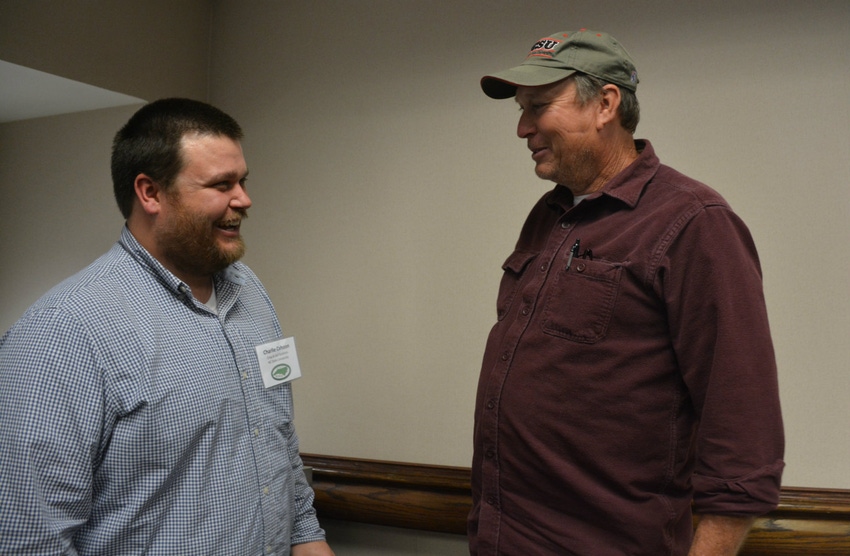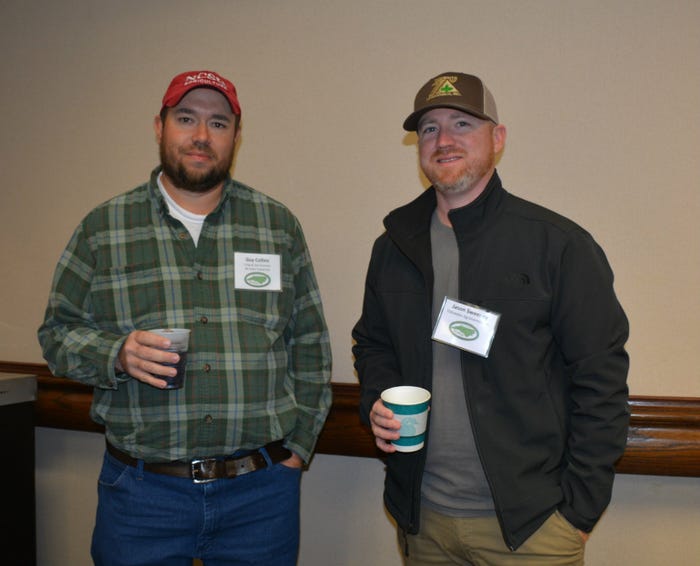
Mandatory training for anyone who plans to apply auxin herbicides over-the-top of auxin-tolerant cotton or soybeans in North Carolina begins in earnest Jan. 14 and runs all the way through March 26 at locations across the state.
A total of 31 mandatory 2020 Auxin Herbicides Best Management training sessions will be conducted by North Carolina State University weed scientists, in cooperation with the North Carolina Department of Agriculture and Consumer Services.
The 2020 Auxin Herbicides-Best Management Practices fulfills the training requirement mandated by the federal and 24(c) labels for dicamba containing products registered for over-the-top use on dicamba-tolerant cotton and soybeans.
The training will also meet 24(c) label requirements for 2,4-D choline containing products for over-the-top use on 2,4-D-tolerant cotton and soybeans in North Carolina.
All persons planning to apply dicamba (Engenia, FeXapan, Tavium or XtendiMax) to Xtend cotton or soybeans or 2,4-D choline (Enlist Duo or Enlist One) to Enlist cotton or soybeans must complete the training.
All applicators of dicamba products must also be certified or licensed pesticide applicators.
Dr. Charlie Cahoon, North Carolina State University Extension weed specialist for cotton and corn, notes that a clear message will be emphasized at each of the training sessions this winter is that any pesticide is capable of drift and that applicators must exercise caution, particularly when applying 2,4-D or dicamba near sensitive crops or plants.
“I saw more 2,4-D damage to cotton than I wanted to see in 2019. I’d like to see zero,” Cahoon said at the North Carolina Agricultural Consultants Association fall conference Dec. 6 at the Homewood Suites in Raleigh.
“With our auxin training and fewer restrictions on 2,4-D, some people got complacent thinking it was safer from an off-target standpoint. In regard to sensitive plants, 2, 4-D and non-2,4-D cotton do not mix,” Cahoon said. “2, 4-D cotton and non-2, 4-D cotton are oil and water.”
Cahoon said agriculture will continue to be scrutinized for how applicators manage auxin herbicides. He said farmers can’t let their guard down on off-target movement.
In 2019, six auxin application complaints were submitted to NCDA, compared to six in 2018 and 13 in 2017. In 2019, five cases were proceeding through the regulatory process with one withdrawn.
In 2018, five settlement agreements proceeded through the regulatory process with one withdrawn.
In 2017, there were 11 settlement agreements.
In 2019, crops showing damage included three soybean complaints, one tobacco complaint and one residential tree complaint. In addition, one sale to an uncertified applicator was filed.
Cahoon noted that these are official complaints filed with NCDA. He said there are likely more reports of damage to crops that just weren’t officially filed with NCDA.
Cahoon said the majority of issues surrounding off-target damage in 2019 was due to physical drift issues. He said farmers can expect even more scrutiny on off-target movement of herbicides in 2020.
“Physical drift issues were the culprit for the majority of fields I walked this season. In some cases the herbicide moved a lot farther than I was comfortable with,’ Cahoon said.
“In one particular case, my colleague, Dr. Wes Everman, noted the average wind speed was in compliance with label requirements, but wind gusts peaked at 18 miles per hour which carried the pesticide a very long distance from a physical standpoint,” Cahoon said.
“Wes and I plan to emphasize cases like this in the 2020 auxin training,” Cahoon said.
Cahoon noted that most of the damage is caused by “knucklehead” errors with “one person in the neighborhood spraying 2,4-D or dicamba with blatant disregard for adjacent sensitive crops.” He emphasized that the technology is here to stay, and farmers and applicators need to learn to use it better.


About the Author(s)
You May Also Like






